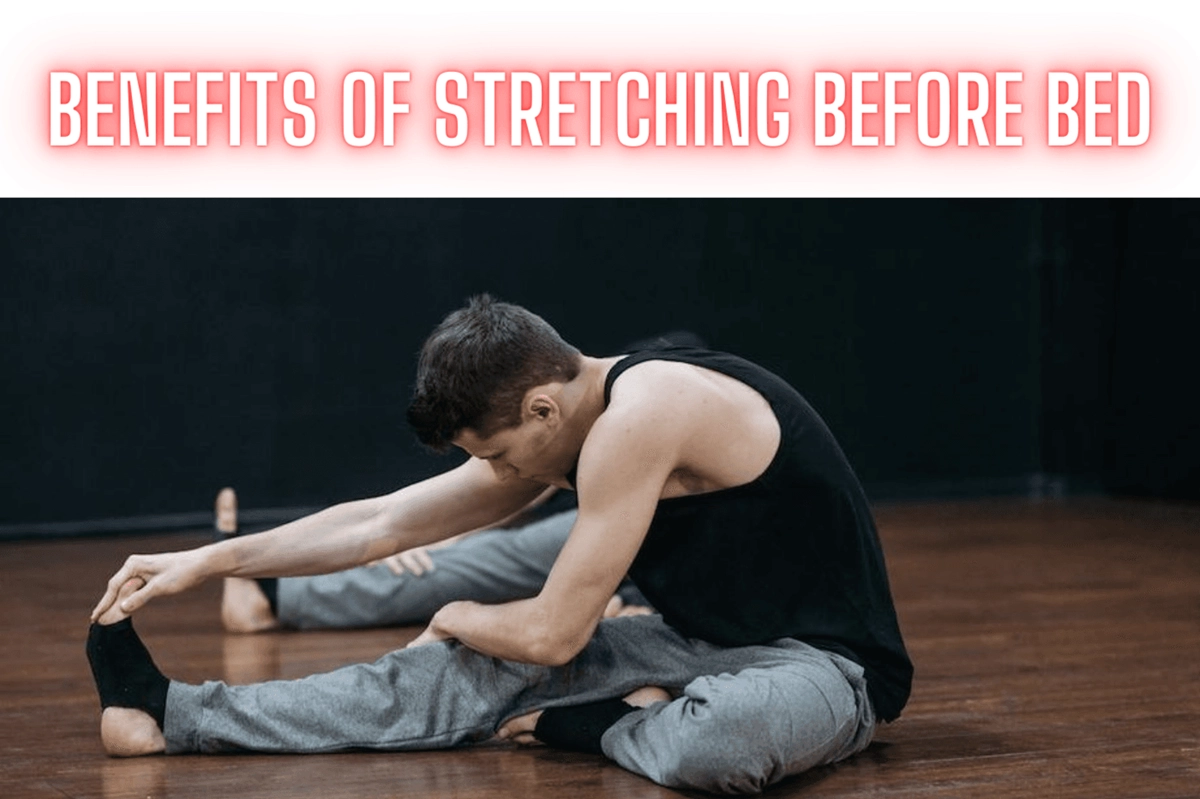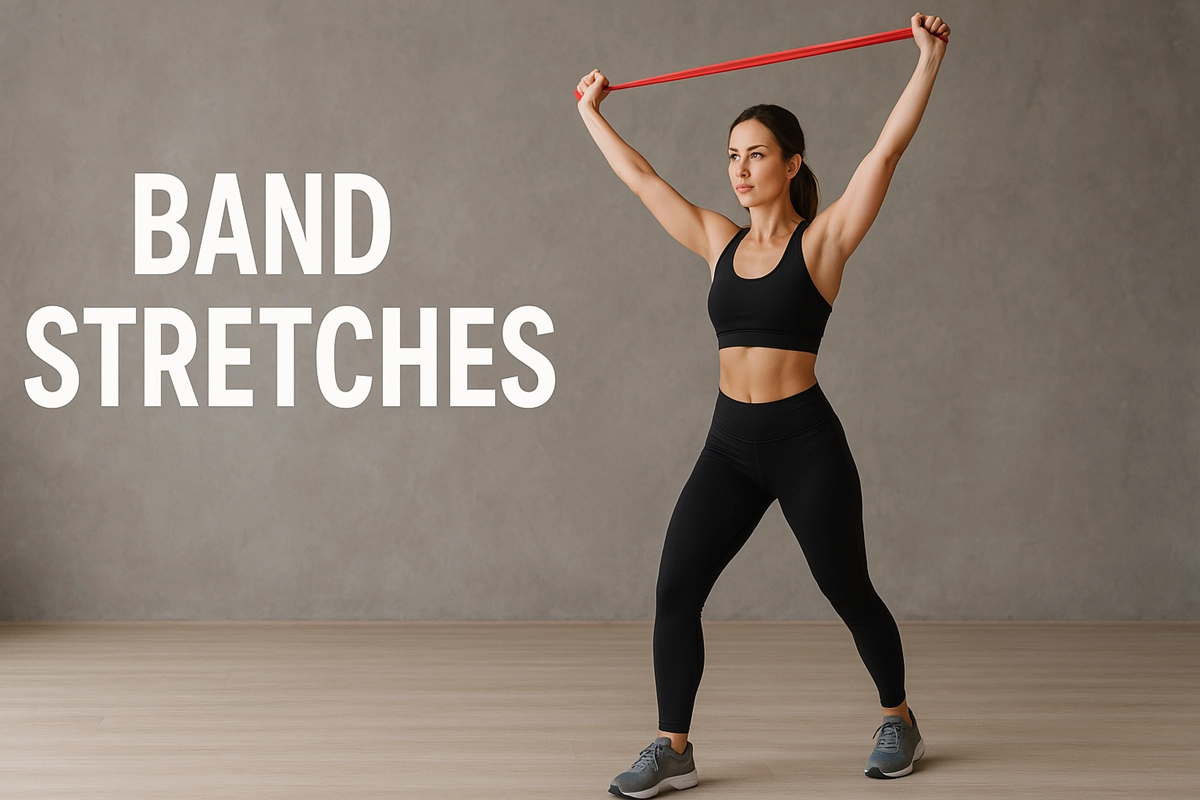If you’ve been skipping neck training, you’re missing out on a vital component of full-body strength.
A well-developed neck isn’t just about aesthetics—it’s essential for injury prevention in sports and daily life. Even Arnold Schwarzenegger emphasized neck training during his competitive years, incorporating specific exercises into his routine.
You’ll discover four proven exercises that’ll transform your neck from a potential weak link into a powerful asset.
Anatomy of the Neck
Your neck is more than just the trapezius muscles that bodybuilders love to show off.
In fact, you’ve got several key neck muscles that work together to support your head position and daily movements.
The major players include your trapezius, which handles neck extension and rotation, and the sternocleidomastoid muscles that control neck flexion and side-to-side movement.

You’ll also find the levator scapulae, which connects your cervical spine to your shoulder blades, and the scalene muscles, which assist with breathing and neck mobility.
Understanding these muscles is vital for proper neck stretches and strengthening exercises.
Each muscle group plays a specific role in maintaining your posture and enabling the complex movements of your head throughout the day, from nodding to turning.
Benefits of Direct Neck Exercises
Strength in the neck region delivers far more than just an impressive physique.
When you incorporate movement exercises and neck retraction into your routine, you’ll experience reduced neck tightness and improved flexibility. These benefits extend beyond aesthetics into practical advantages for your training.
Your breathing mechanics will improve as neck muscles support respiratory function during intense workouts. For heavy compound lifts like squats and deadlifts, stronger neck muscles enhance your performance by maintaining proper form and bar positioning.
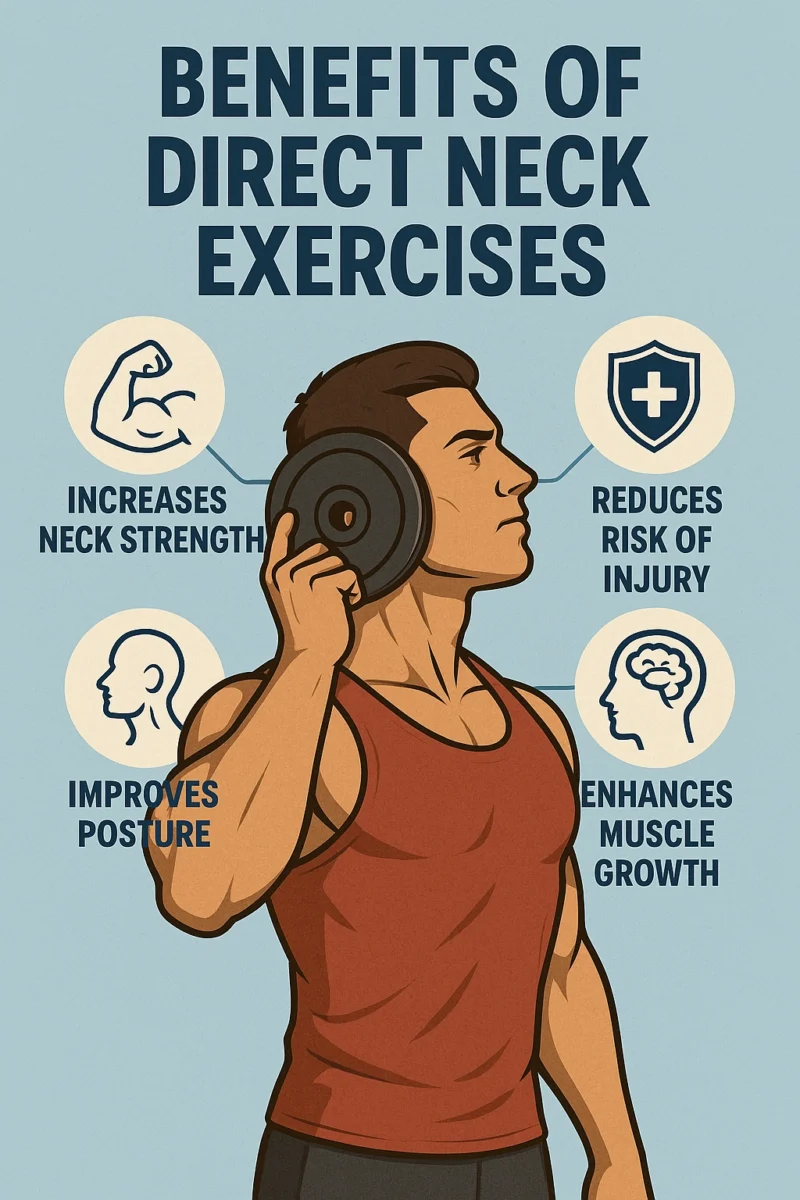
Perhaps most importantly, direct neck training serves as essential injury prevention, especially if you’re involved in contact sports.
Through consistent flexibility exercises and progressive strengthening, you’re not just building a more aesthetic neck – you’re creating a foundation for better overall athletic performance and long-term protective benefits.
Top 4 Neck Exercises
You’ll want to master four key exercises to build impressive neck strength and size: Kirk Shrugs, Dumbbell Shrugs, Prone Weighted Neck Extensions, and Stability Ball Neck Bridges.
These movements target different angles of your neck musculature, ensuring complete development while maintaining proper form and control throughout each rep.
When you combine these exercises in your routine, you’ll be on your way to developing that powerful yoke that made Arnold’s physique so commanding on stage.
#Kirk Shrugs
Powerlifting legend Kirk Karwoski stumbled upon one of the most effective neck-building exercises while trying to improve his deadlift grip strength.
Working with coach Marty Gallagher, he discovered that finger-tip barbell shrugs not only enhanced grip strength but built an impressive yoke and upper back muscle.
You’ll target your forearms, deltoids, traps, and lats while preventing common neck problems through proper shoulder blade positioning.

Here’s how to perform Kirk shrugs correctly:
Set a barbell at thigh height in a squat rack, grip it with just your fingertips, and shrug upward while keeping your shoulder blades retracted.
Hold briefly at navel height, then lower slowly. Focus on engaging your traps and lats without involving other muscles.
Perform 3 sets of 8-12 reps to finish your workout, and watch your neck strength soar.
#Dumbbell Shrug
While Kirk shrugs require specialized technique, the dumbbell shrug stands as a time-tested staple for building impressive traps and neck strength. This neutral position strengthening exercise lets you track progress on each side, ensuring balanced development.
Your exercise program should start with proper form: grip a dumbbell in each hand, maintain a tall chest, and keep your chin tucked. During shoulder shrugs, raise your traps toward your ears, hold briefly, then control the descent. Monitor pain levels and adjust weight accordingly.

For ideal results in your dumbbell set, choose between strength-focused sets of 6-12 reps or endurance work at 12-25 reps. This versatile movement not only builds a powerful neck stretch but also enhances forearm strength and grip power through 2-4 targeted sets.
#Prone Weighted Neck Extension
To build a truly resilient neck, you’ll need to target the smaller stabilizing muscles that support the larger muscle groups. The prone weighted neck extension specifically strengthens your posterior neck muscles, which play an essential role in maintaining proper posture and preventing forward head tilt.
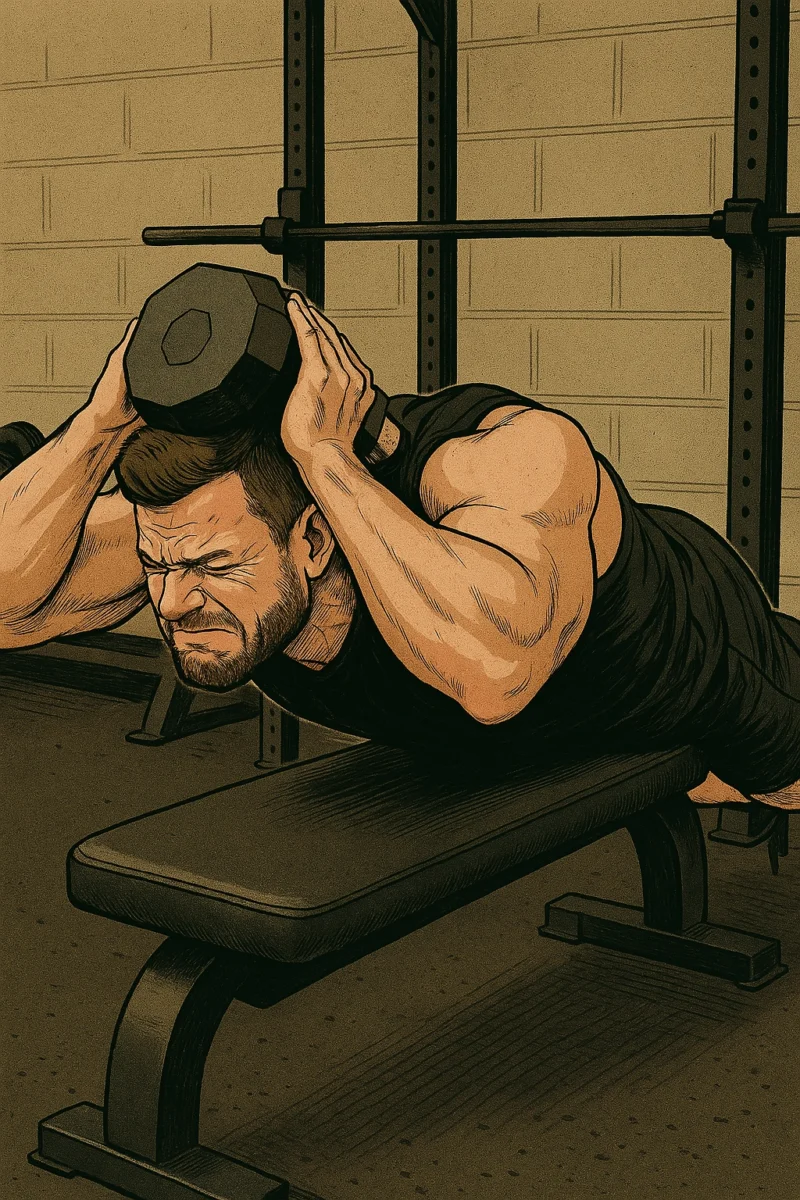
Here’s how to perform it:
- Lie face down on a bench with your head off the end
- Place a folded towel and light weight plate on your head
- Hold the plate’s edges while keeping the towel between it and your head
- Slowly lift your head through a comfortable range of motion
- Lower your chin toward your chest with control
Start with 1-2 sets of 15-20 reps during your warmup.
Remember, it’s better to master proper form with lighter weights than to risk injury.
Always consult a healthcare professional before advancing exercise levels.
#Stability Ball Neck Bridge
The stability ball neck bridge ranks among the most effective ways to build thorough neck strength while engaging your entire posterior chain.
Start by sitting upright on a stability ball, then walk your feet forward until your head rests on the ball. Engage your glutes and spinal erector muscles to create a straight line from head to knee. From this position, tuck your chin toward your chest, then slowly roll your head back until you feel a comfortable stretch in your neck muscles.
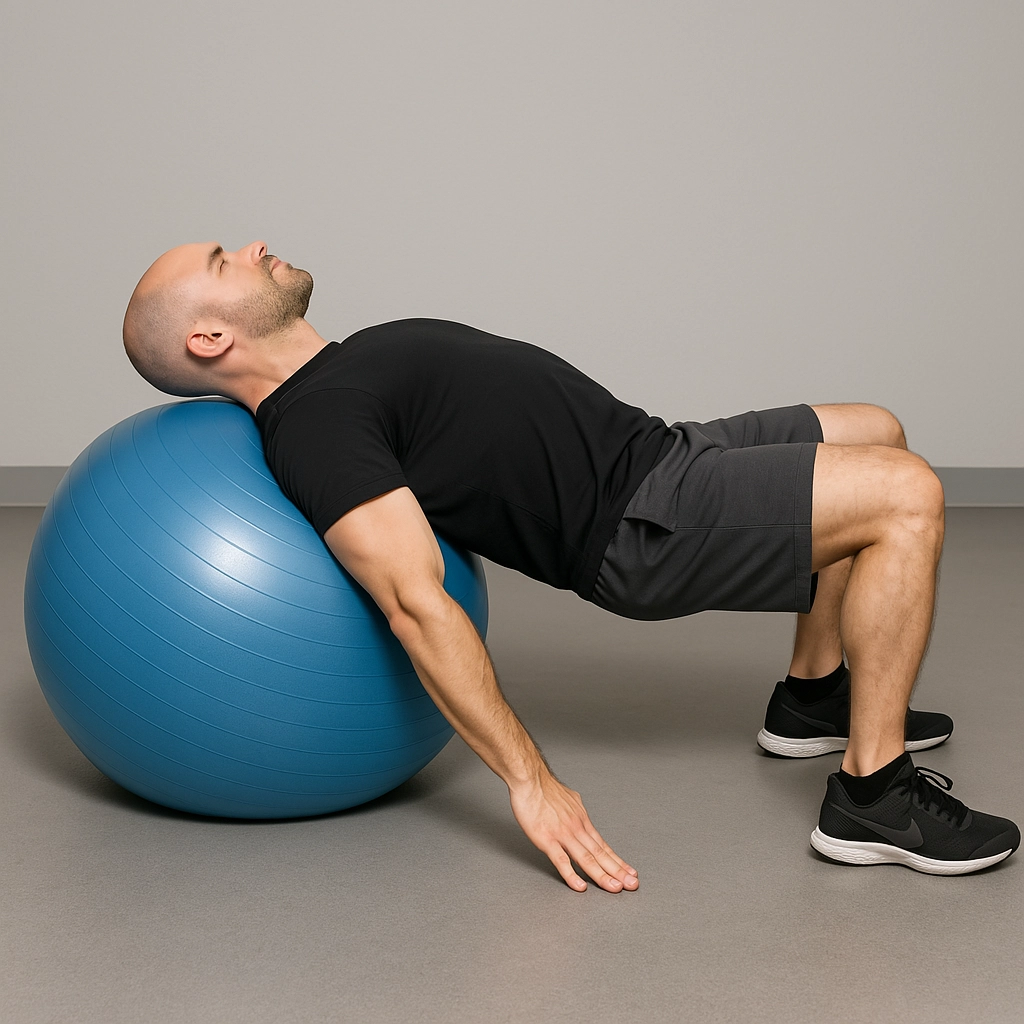
You’ll notice this exercise activates multiple muscle groups, including your upper traps, levator scapulae, and sternocleidomastoid.
Whether you’re using it as a warm-up or recovery exercise, aim for 15-20 controlled repetitions. If you’re new to neck training, master the basic supine neck bridge before attempting this advanced variation.
To Wrap It All Up
You’ve now got the blueprint for building a neck that’ll turn heads – literally! By incorporating these four powerhouse exercises into your routine, you’ll develop strength that Arnold himself would admire.
Remember, the neck isn’t just about aesthetics; it’s your body’s natural shock absorber. Train it consistently, progress gradually, and you’ll build a foundation that’s both functional and impressive. Now get out there and train like a champion!
FAQs
What Are the Benefits of Neck Exercises?
Neck exercises improve neck strength, increase flexibility, reduce neck pain, and enhance posture. They also lower tension-related headaches by relaxing neck muscles. Consistent neck exercises support spinal alignment and prevent stiffness from prolonged sitting or computer use.
Are Neck Exercises Safe?
Neck exercises are generally safe when performed with correct technique and controlled movements. Avoid sudden jerking motions. Consult a healthcare professional if you have neck injuries, chronic pain, or neurological conditions before starting neck exercises.
Why Do I Need to Do Neck Exercises?
You need to do neck exercises to strengthen neck muscles, reduce pain from poor posture, and prevent stiffness from desk work. They improve range of motion and reduce the risk of cervical spine issues. Regular neck exercises maintain neck health and functional mobility.
How Often Should I Do Neck Exercises?
Do neck exercises daily or at least 3-5 times per week to maintain strength, flexibility, and posture. Perform each exercise slowly with proper form for 5-10 repetitions. Adjust frequency if you experience pain, and consult a professional if symptoms persist.
Can Neck Exercises Help With Posture?
Neck exercises help improve posture by strengthening neck and upper back muscles, aligning the cervical spine, and reducing forward head posture. Consistent neck exercises support an upright position, decrease muscle imbalances, and enhance overall spinal alignment during daily activities.
Can Neck Exercises Prevent Neck Pain?
Neck exercises prevent neck pain by increasing muscle strength, improving flexibility, and enhancing blood flow to neck tissues. Regular exercises reduce strain from poor posture, support spinal health, and lower the risk of tension-related pain caused by prolonged sitting or screen use.





